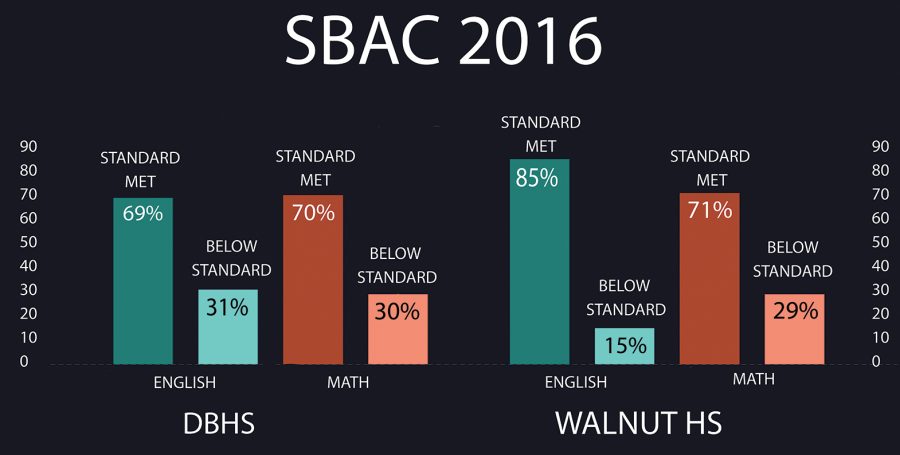2016 scores prompt change
March 22, 2017
As the end of the year looms and students begin preparing for Advanced Placement exams and finals, Diamond Bar High School administrators have been promoting a different test. Due to students having performed worse than expected on the SBAC last year, school officials have put new measures in place to improve student performance.
Administered by the Smarter Balanced Assessment Consortium, the computer-based assessment is composed of a math and an English section and is aligned with Common Core standards.
The test also helps collect data in thirteen states across the U.S. on the effectiveness of teaching and the ability of students, and curricula at schools have changed in accordance with test results, such as the increased prevalence of nonfiction taught at DBHS.
In past years, the test has been administered after spring break; this year it will be administered March 27-28 and April 3-4, before students go on break.
“We’ve [made the change] in order to create a gap for students who are concentrating on AP tests, and we were mindful of that because we wanted to make sure that the students could participate in this test, do their best on it and not have any anxiety or stress about time away from class,” said DBHS Instructional Dean Gabriel Aguilar.
In addition, school officials held an informational meeting for parents in the gym on March 6, where they discussed the structure and schedule of the test. Junior teachers have also been provided with test guides to prepare students for the exam, and classes will be taking practice exams in the weeks leading up to the test.
This new emphasis comes on the back of disappointing results earned by current seniors who took the exam last year.
Results from the California Assessment of Student Performance and Progress website show that 31 percent of DBHS juniors failed to meet state standards in English last year, up from 25 percent in 2015. In math, the number of students failing to meet state standards was 29 percent, up from 28 percent in 2015. In addition, about 100 students, of 729 enrolled in the class, decided to opt out.
“We’re being a more deliberate in making sure that all of our juniors have an opportunity to take the practice tests in order to feel comfortable for what the testing is going to be like,” Aguilar said. “It’s really critical that all the students are performing because that gives an accurate picture of the type of performance and program that the school offers.”
Students have the option of declining to participate in the SBAC testing, though the school must have a 95 percent participation rate in order to comply with state standards. Aguilar says that students are often misinformed about the purpose of the test and that he school has tried to rectify this.
“We want to see the focus on the importance of the test, because we feel that there’s been misunderstandings about the assessment and people not really understanding why these tests are important,” Aguilar said. “We’ve really made an effort to make sure we’re informing students, parents and teachers of why these tests are important and how they impact students.”
The results of the test help determine the reputation of the school and thus have ramifications on all students applying for university. Taking the exam can qualify students for class placements at their future schools as well; otherwise, students would need to take a separate exam to obtain placement scores.




